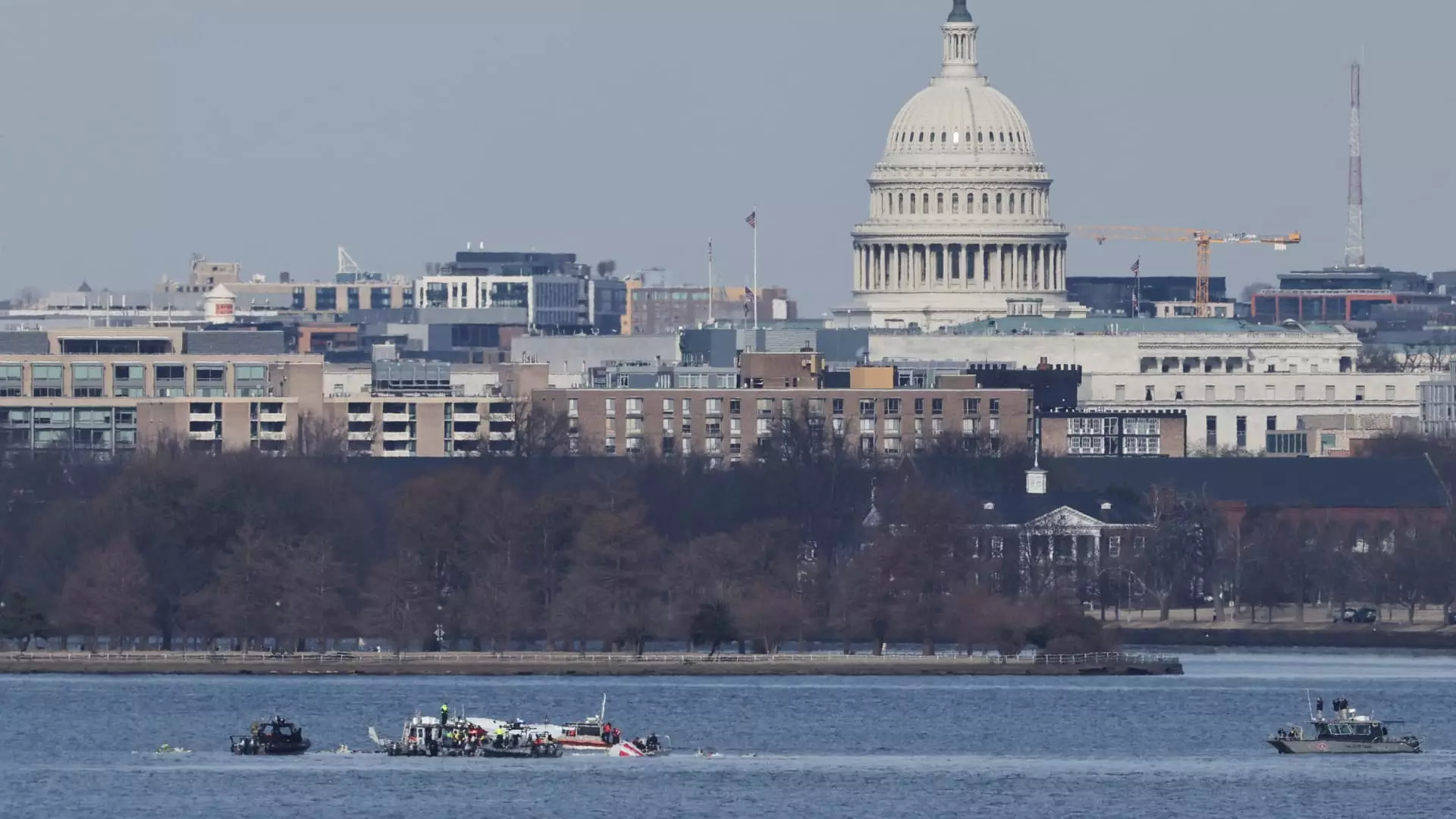On a fateful evening over the Potomac River, a grim incident unfolded when an Army Black Hawk helicopter collided with an American Airlines jetliner. The tragedy claimed the lives of 67 individuals—64 from American Airlines Flight 5342 and three aboard the helicopter. The catastrophic event, occurring near Washington D.C.’s Reagan National Airport, marked the deadliest aviation accident in the U.S. since 2001. As investigations unfold, questions abound regarding the circumstances that led to this deadly encounter in the skies.
Preliminary reports indicate that at around 9 p.m. ET, the Bombardier CRJ-700 aircraft was approximately 300 feet above ground, preparing to land on Runway 33 at Reagan National. Meanwhile, the Black Hawk helicopter, reportedly engaged in a standard proficiency training flight, was also operating within the restricted airspace, an area characterized by strict flight regulations. Under Federal Aviation Administration (FAA) guidelines, helicopters are restricted to a maximum altitude of 200 feet in close proximity to the airport, posing significant questions about the helicopter’s actual operational height at the time of the incident.
National Transportation Safety Board (NTSB) officials continue to gather vital evidence from the crash site, focusing on data recovered from both the flight data recorder and the cockpit voice recorder from the American Airlines jet. Despite an abundance of information, NTSB Chair Jennifer Homendy emphasized the critical need for verification and accuracy before drawing any conclusions. “It’s not that we don’t have information. We do have information,” she stated, underscoring the complex nature of aviation investigations, which require meticulous attention.
The collision has reignited discussions about air traffic regulations in densely populated areas like Washington D.C. Helicopters regularly traverse through complex airspace dominated by public and military aviation needs. This tragic event highlights the potential pitfalls of existing operational protocols, raising concerns over whether current regulations effectively ensure safety in one of the busiest air corridors in the nation. In response to the incident, the FAA swiftly issued new flight restrictions, delineating specific zones where helicopters can operate within the vicinity of Reagan National Airport. Notably, the airspace surrounding certain bridges, previously classified as Zone 1, is now inactive, while modifications to allow for helicopter operations south of the Woodrow Wilson Bridge are also in place.
The establishment of these flight restrictions aims to create a safer environment for both commercial and military aviation, yet it remains to be seen whether these measures will be sufficient to prevent similar catastrophes in the future. Fellow aviation experts express concern about the reliability of existing air traffic management systems, especially amidst the rising frequency of helicopter flights in urban zones.
The response from key individuals, including Defense Secretary Pete Hegseth and even President Donald Trump, indicates a growing urgency to address the situation. Statements made at a White House briefing hinted at potential discrepancies with the Black Hawk’s altitude. “Tragically, last night a mistake was made,” Hegseth remarked, acknowledging the need for a thorough investigation at both the Department of Defense (DoD) and Army levels. Trump further suggested the helicopter was operating well above the prescribed altitude, highlighting a significant area of concern.
These early assertions raise many questions, particularly regarding the ongoing investigation process and the necessity to uphold the integrity of an unbiased inquiry. Early conclusions from high-profile figures may inadvertently influence public perception and complicate the investigative efforts of the NTSB. The gravity of this situation calls for a delicate balance between obtaining answers for the victims’ families and adhering to the rigorous standards of aviation safety investigations.
As the investigation into this catastrophic event continues, it serves as a chilling reminder of the complexities involved in aviation safety, especially in congested airspaces like Washington D.C. The outcome will likely set a precedent for future regulations concerning helicopter operations and airspace management. Lessons learned from the investigation could ultimately reshape operational protocols, with the goal of ensuring that such avoidable tragedies do not occur again. The aviation community must remain vigilant, learning from this disaster to foster a safer flying environment for every traveler above the skies of America.

